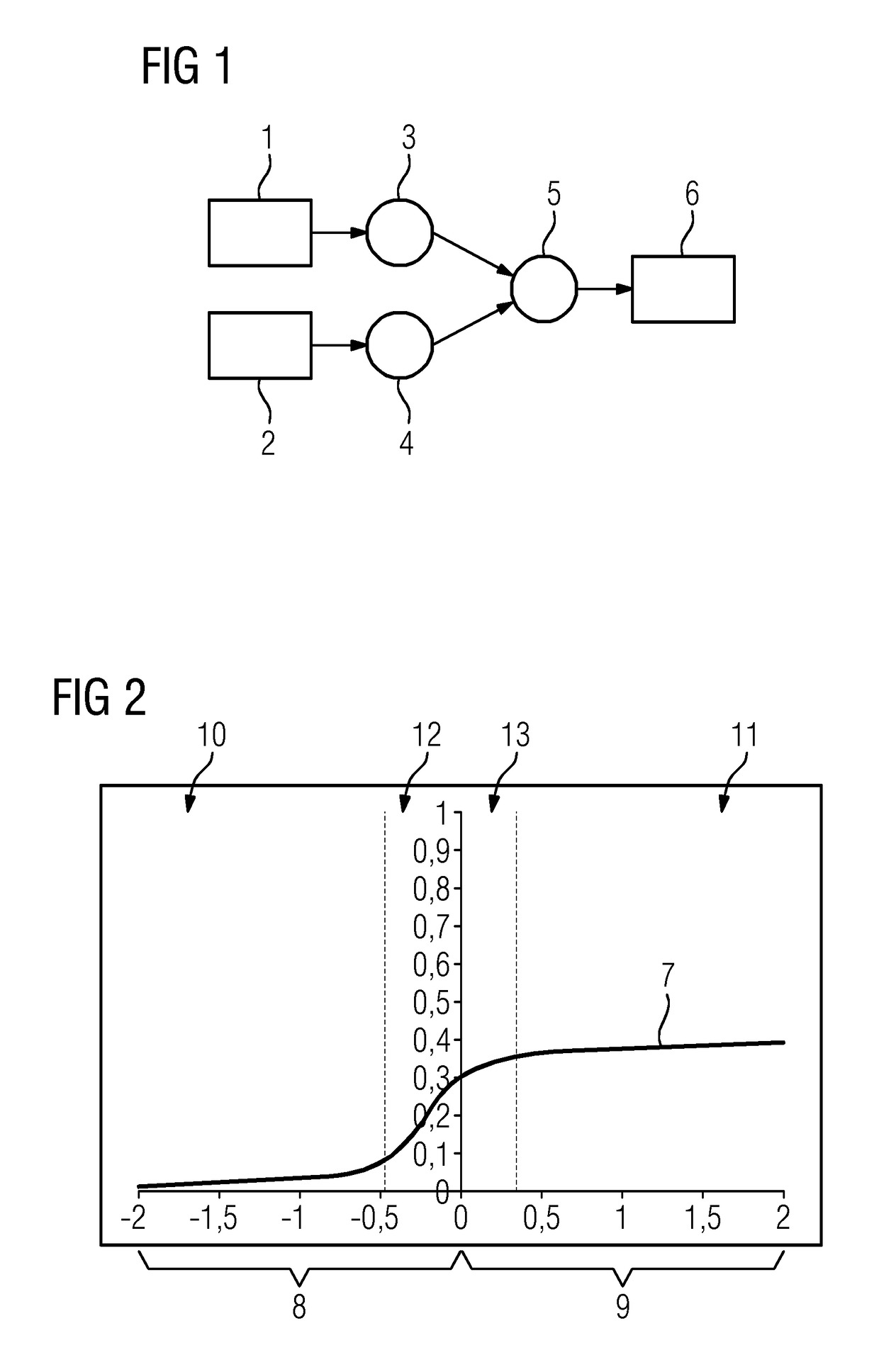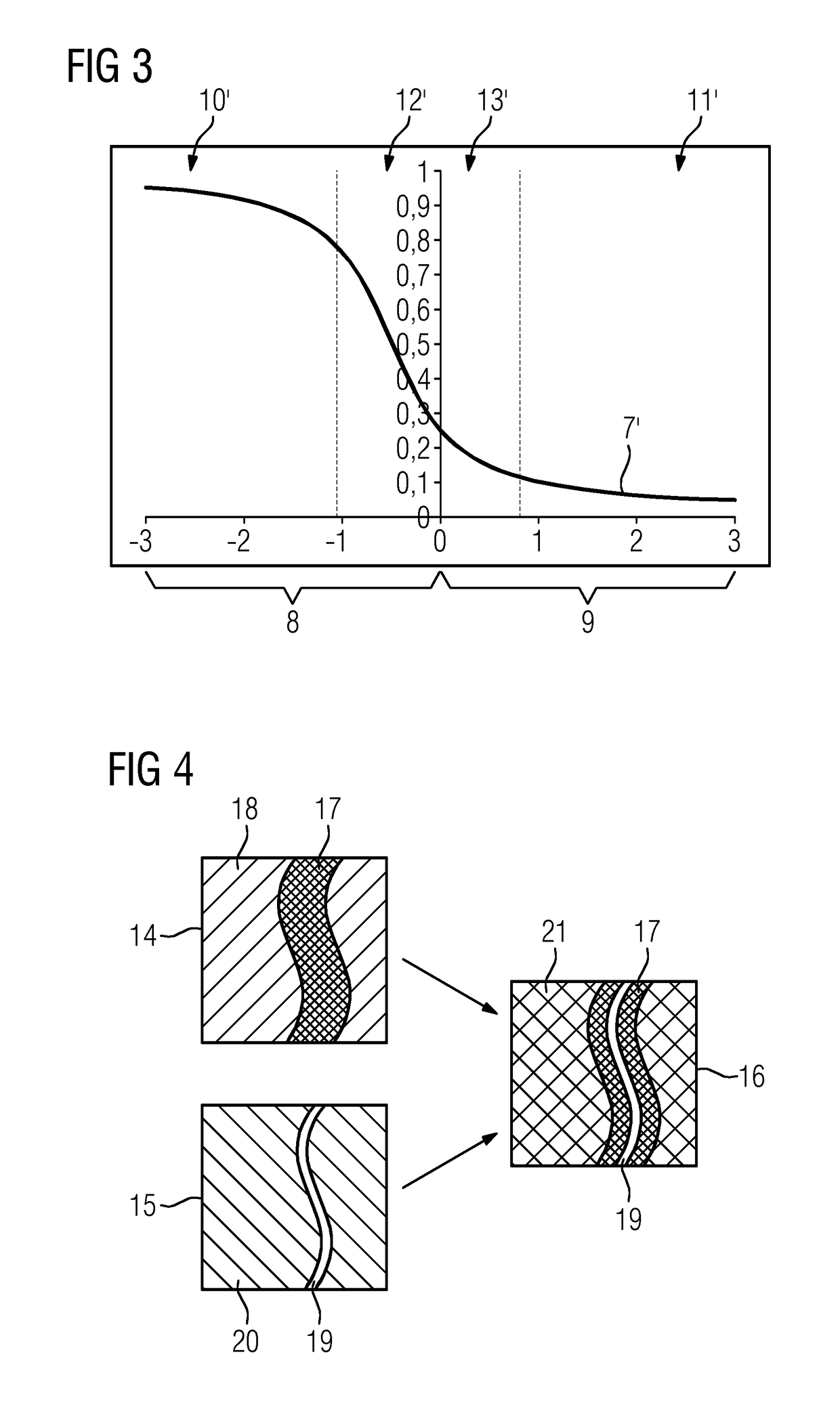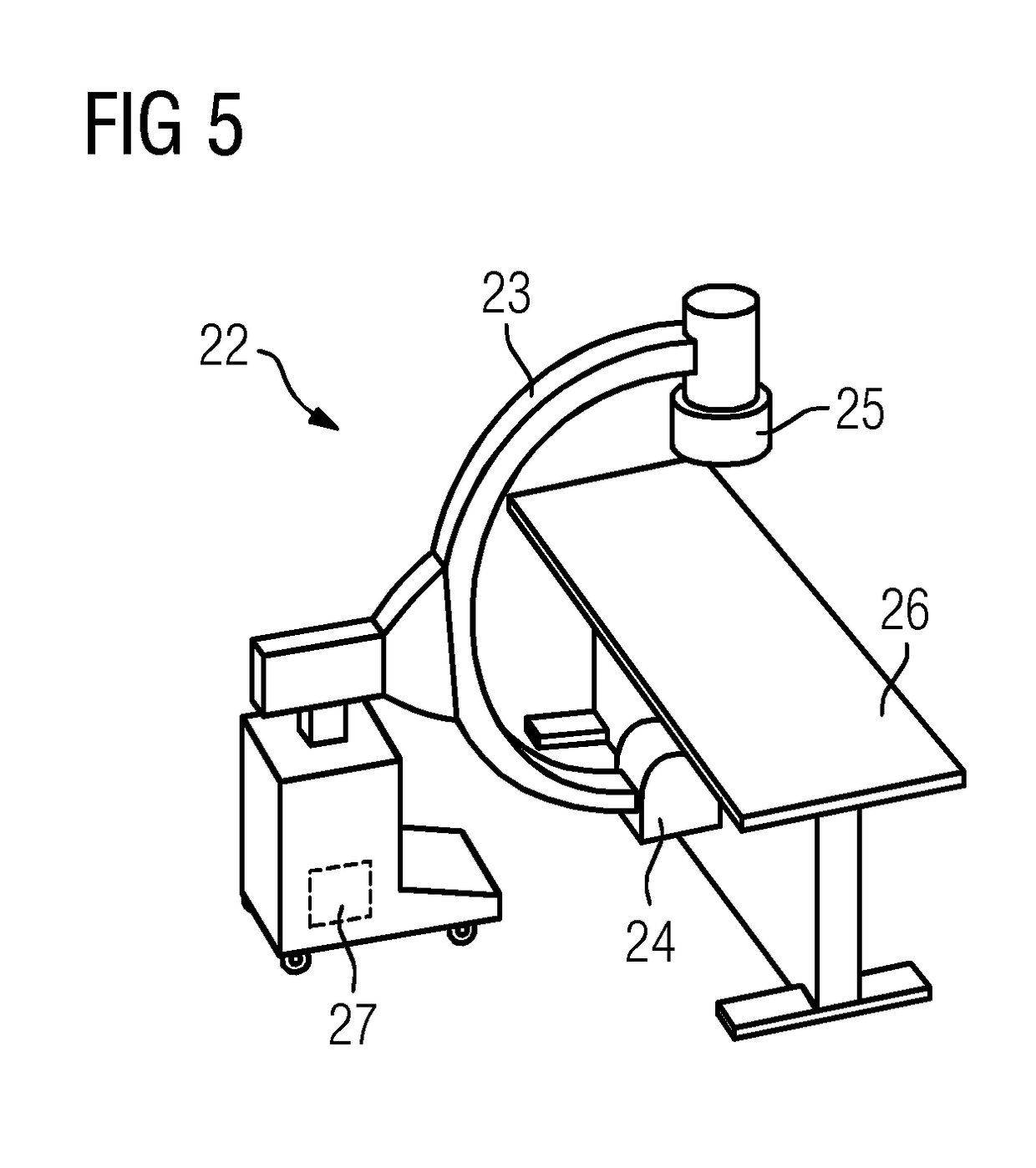Determining a navigation image to be displayed
a navigation image and image technology, applied in image data processing, diagnostics, applications, etc., can solve the problems of information loss, inability to clearly distinguish from the directly adjacent background, etc., and achieve the effect of reducing the probability of features that are no longer visible in the navigation image, small dynamic result range, and large dynamic result rang
- Summary
- Abstract
- Description
- Claims
- Application Information
AI Technical Summary
Benefits of technology
Problems solved by technology
Method used
Image
Examples
Embodiment Construction
[0027]FIG. 1 is a diagram depicting a sequence of a method. In this case, the exemplary embodiments shown here relate to an application in which a navigation image is to be enabled that is as informative and identifiable as possible for monitoring the navigation of a medical instrument in a blood vessel system in a region of interest of a patient. To this end, two subtraction images compiled with an X-ray device are combined, namely a first subtraction image 1 (e.g., a blood-vessel system image) and a second subtraction image 2 (e.g., an instrument image). To determine the subtraction images, X-ray images are recorded in which the desired features, in particular highlighted, may be identified, from which a mask image recorded under the same conditions, without highlighting or without the medical instrument, which also entails an X-ray image of the region of interest, is subtracted. In the case of the first subtraction image 1, the X-ray image is recorded with contrast-medium-filled ...
PUM
 Login to View More
Login to View More Abstract
Description
Claims
Application Information
 Login to View More
Login to View More - R&D
- Intellectual Property
- Life Sciences
- Materials
- Tech Scout
- Unparalleled Data Quality
- Higher Quality Content
- 60% Fewer Hallucinations
Browse by: Latest US Patents, China's latest patents, Technical Efficacy Thesaurus, Application Domain, Technology Topic, Popular Technical Reports.
© 2025 PatSnap. All rights reserved.Legal|Privacy policy|Modern Slavery Act Transparency Statement|Sitemap|About US| Contact US: help@patsnap.com



